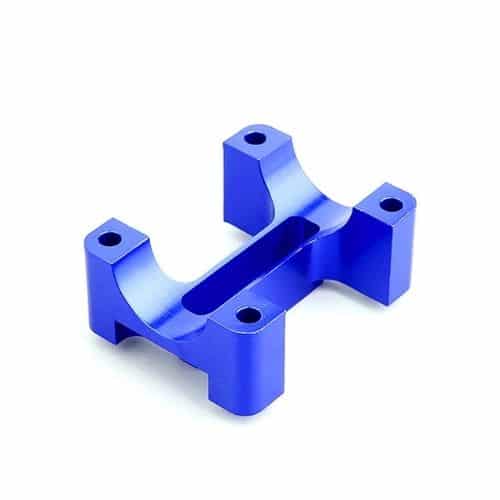
Because electrical power sources can range in size from small batteries to large power grids, the electrical power connectors that allow the transmission of electricity vary in form. Depending on the electrical current carried and the purpose of the application, one of several power connector types may be appropriate. To better understand which connector is best-suited for a particular purpose, it’s helpful to examine how electrical power connectors are classified and the capabilities of each variant.
ac power connector types electrical power cable connectors
Generally, electrical power connectors are classified according to how much voltage they carry. There are three categories of electrical connectors: light-duty, medium-duty, and heavy-duty. Each category heading refers to how much voltage the connector can handle.
A light-duty electrical power connector can carry up to 250 volts (V) of a low current. However, if contact resistance doesn’t stay low and stable, the ability of the device to transmit current may be compromised. Additionally, it’s important to minimize the presence of external contaminants on connector contacts (such as dirt, dust, and water) because the component is prone to oxidation and contaminants can catalyze the process. Power connectors found in cars, radio and communication devices, and those intended for basic instruments are all classified as light-duty power connectors.
A medium-duty power connector carries a higher-level electrical current at up to 1,000 V. Unlike low-duty connectors, medium-duty variants can suffer from electrical wear if the contact material isn’t carefully monitored to prevent involuntary welding and erosion. Thus, proper material selection is critical in ensuring the device’s integrity. Medium-duty can be found in an array of domestic and industrial applications.
Heavy-duty connectors carry high-level currents in the range of hundreds of kilovolts (kV). Because of the large load they can carry, heavy-duty connectors are effective in large-scale power distribution applications, as well as power management and protection systems, such as circuit breakers.
Electrical Power Connector Types
In addition to the three general categories of power connectors, there are numerous different types of power connectors that fall under each heading. Some of these variants include:
AC Connectors
AC power connector types are mainly used to connect equipment to a wall outlet in order to power the device. Of the types of AC connectors, power plugs are for standard size devices while industrial AC power plugs are large electrical wire connectors for larger industrial applications.
DC Connectors
Unlike AC connectors, DC connectors are not standardized. A DC plug, a variant of a DC connector, primarily supplies smaller electronic devices with power. Because there are different standards of DC plugs, it’s important not to accidentally use incompatible variants.
Wire Connectors
The purpose of a wire connector is to bring two or more wires together at a common point of connection. Lugs, crimps, set screws, and split-bolt types are all examples of this variant.
Blade Connectors
Blade connectors feature a one-wire connection—the blade connector is inserted into a blade receptacle and when the blade connector’s wire makes contact with the receptor’s wire a connection is made.
Plug and Socket Connectors
Plug and socket connectors consist of a male and female component which fit together snugly. A plug, the male component, is comprised of many pins and prongs, which when inserted into the female socket, securely latch on to corresponding contacts.
Insulation-Piercing Connectors
Insulation-piercing connectors are useful because they don’t require uncovered wires. Instead, a fully covered wire is inserted into the connector, and a small device inside the opening removes the wire’s covering as the wire slides into place. Then, the uncovered tip of the wire makes contact with the receptor, and electricity can be transmitted.
XTJ is a leading OEM Manufacturer that is dedicated to providing one-stop manufacturing solutions of Machining 6061 Aluminum from prototype to production. We are proud to be an ISO 9001 certified system quality management company and we are determined to create value in every customer relationship. We do that through collaboration, innovation, process improvements, and exceptional workmanship.lication: Automotive industry, Bicycle and motorcycle, Door and windows and furniture, Household appliance, Gas meter, Power tool,LED lighting, Medical instrument parts, ect.

